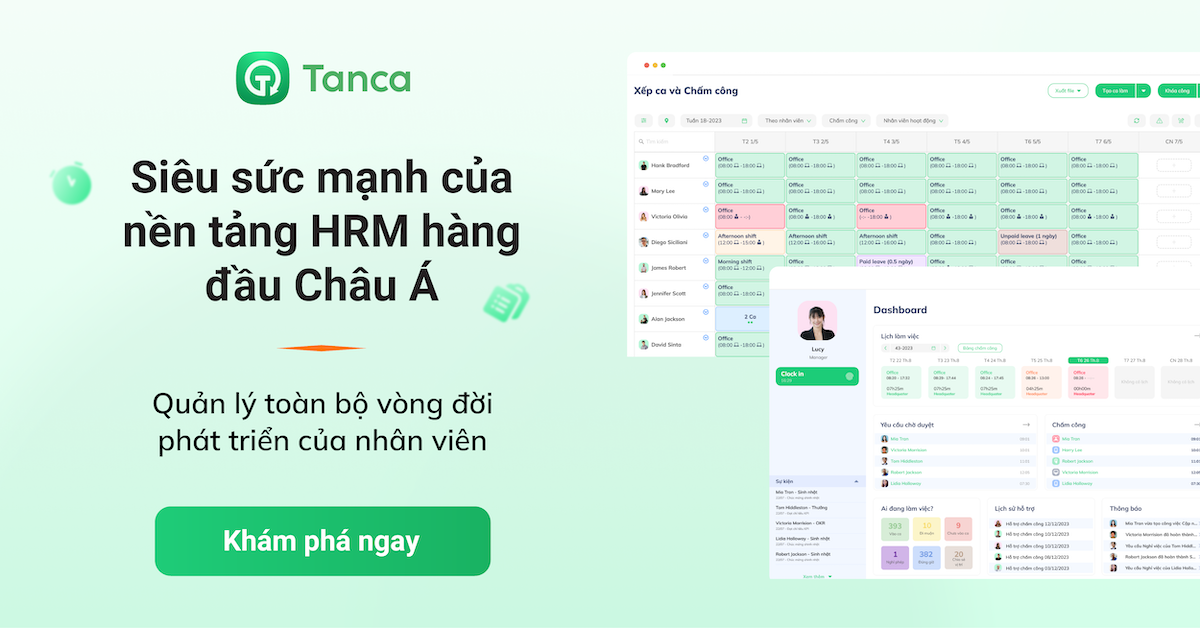Fighting employee absenteeism in the workplace can have a challenging impact on the success of your company. Indeed, the expenses associated with employee absence are frequently high. The productivity of a company's personnel should then be maximized by finding measures to lower absence rates. In this article, we provide you 10 ways to handle employees absences more effectively.
What does Employee Absenteeism mean?

The term "absenteeism" refers to frequent, unplanned, and unscheduled absences from work. Even though every employee occasionally misses work, it's crucial to distinguish between absenteeism and other types of absence.
Absenteeism isn't a valid absence that the employer will allow or that is brought on by a valid illness or disability. Understanding the difference between legitimate absences and absenteeism is the first step to minimizing their consequences on your organization.
Here are reasons cause of absenteeism:
- Small illness.
- Harassment or bullying at work.
- Mental health problems.
- Long-term conditions and serious illnesses.
- Family problems.
- Permitted Leave.
- Traveling Problems.
- Issues With The Management Team.
- Mourning period.
Read more: How to Stop Negativity In the Workplace?
Main types of absence
Absences from Work Excused
Unexpected absences that are valid and hence likely to be allowed by a boss include medical emergency, parental leave, and personal leave. These don't turn into absenteeism except if the absence is prolonged or occurs repeatedly without an explanation.
The best absences are those that have been planned in advance and are: This includes time spent on vacations, holidays, and absences due to illness or injury that can be anticipated, such as maternity leave or post-operative rehabilitation.
These are not absences because they are not routine or taken without justification. They are completely acceptable and less difficult to prepare for, which means they have no impact on production.
Absences from Work Without Excuse - Absenteeism
Most individuals are unaware that absenteeism also encompasses partial absences like tardiness, leaving early, and even prolonged meals. Absenteeism is typically described as repeated or regular absence without a valid excuse.
The main problem with absenteeism is that it lacks legitimacy. Any recurring or protracted absence without a valid excuse, whether it is publicized or unannounced, is considered absenteeism.
Effects of absenteeism in the workplace
Workplace absences can have an impact on both your employees and your company. You may observe its effects on the revenue stream, cash flow, and output of your company.
Numerous studies have been done on the effects of absenteeism, and the cost it has on both the economy and businesses is by far the biggest effect.
According to the Gallup-Healthways wellbeing survey, lost productivity costs the US economy little over $84 billion yearly.
The Chartered Institute of Personnel and Development (CIPD) in the UK calculated that the average yearly cost of absenteeism per employee was £554.
Other factors impacted besides the financial impact are:
Performance
It should be obvious saying that an employee's performance will suffer if they frequently miss work compared to those who don't.
They will undoubtedly perform worse if they frequently miss work because they would have missed out on projects, updates, and training. These factors can all contribute to low morale at work.
Reduced productivity
As performance declines, productivity requirements increase as well as the standard of the task. Additionally, managers are left to try to restructure projects or change deadlines while personnel is gone from the office, which doesn't impress clients.
Read more: What Is The Difference Between Parttime And Fulltime?
Fighting Employee Absenteeism In Workplace Guide

You won't be able to fully eliminate the issue of workplace absence. There will occasionally be unplanned absences for employees for a variety of reasons.
However, there are still a number of approaches to raise staff attendance. The majority of these entail establishing clear attendance policies as well as efforts to promote a healthier work environment. The following are the most effective methods you may use to lower employee absenteeism:
Make a transparent attendance policy
Your staff should be well aware of your expectations for their attendance. As a result, your policy should specify how employees should record absences, how your business will handle absences that are not authorized, and what happens if an employee has a high absentee rate.
Furthermore, you must regularly implement your policy if you want it to be taken seriously.
Address unauthorized absences right away
You should handle cases of absence in accordance with your attendance policy and be fair when imposing penalties.
However, dealing with unplanned absences involves more than just imposing penalties. Additionally, you ought to be sympathetic and supportive of your workers. Investigate the cause of their absences; they might be experiencing an issue that you can assist them with.
The return-to-work interview is an excellent technique to introduce in that regard. This lessens the possibility of frequent absences, assists the employee in readjusting to their position, and demonstrates the company's concern for its employees.
Enhance the wellbeing of workers
Working to lessen stress at work—which, according to a 2013 APA poll, is the leading source of stress—is a hot topic that can be handled by making sure there are open channels of communication for workers to express their problems and that they have the resources they need to lessen stress when it turns excessive.
A stressful or unhealthful work environment is frequently associated with absenteeism. The next step is to consider how to lessen stress at work, for as by putting in place a health program or taking the necessary action to combat harassment.
Make employee wellness a primary priority. An engaged and effective workforce depends on both physical and mental wellness.
Provide possibilities for flexible work
To improve your workers' well-being and their sense of loyalty to the company, consider offering flexible working hours. As a result, you ought to think about implementing remote work and flexible hours. Even infinite vacation days are available from some employers!
Employees with flexible schedules can register their attendance and keep track of how much work time they still have with a time tracking panel very easily.
Encourage participation from employees
Increasing employee engagement is a fantastic method to encourage greater commitment from your workers and make them more eager to come to work.
This entails maintaining a productive internal communication system that allows employees to stay informed about corporate activities, make suggestions for enhancements, report issues, etc.
It also involves funding training and development initiatives for employees. Employees can then develop their talents and become more actively involved in the activities of the company.
Give enough PTO
Good companies are cognizant of the fact that their employees have lives from outside work, claims John Feldmann.
While work is vital, so are family, free time, hobbies, and so on, and for most people, 1-2 weeks of paid time off (PTO) per year is insufficient to fulfill life's duties while still giving much-needed time off.
Employers who offer enough of PTO will notice a rise in employee engagement and a decline in absenteeism.
Foster a culture of cooperation
In keeping with the prior concept, staff members who feel like they are a part of a team are more engaged.
An employee's drive to work and loyalty to the organization are both boosted by a sense of belonging. Additionally, they will consider the consequences before taking an unscheduled day off and burdening their colleagues.
Give feedback
Inform your staff of their strengths as well as areas for improvement. In fact, giving employees direction and support makes them feel valued. They'll be motivated to perform better and give their best effort, which will decrease their likelihood of missing work.
Keeping track of absent workers
Utilize absence management software to keep track of employee work hours and absences. They enable you to gather pertinent information and gauge employee absenteeism. You can evaluate your progress in lowering employee absenteeism over time and adjust your policy as necessary.
Observe the agreements
Nicole Smartt Serres claims that culture affects how decisions are made about recruiting, performance evaluation, and other matters. Team success depends on a dedication to the proper disciplines.
Recognize the reasons why they are unable to arrive at work on time. Keep them accountable to the commitments they made by reminding them of the terms outlined in their offer letter. What's different now? Pose inquiries. Pay attention to the agreements and empathize.
How to talk to an employee about excessive absenteeism?

- Policies and procedures should be explained in detail up front.
- Show compassion.
- Communicate Obviously.
- Show your care for the staff.
- Deal with the problem immediately and in the present.
- Apply a point-based or progressive discipline system consistently and fairly.
- Recognize and recognize outstanding attendance while also noting advancements.
Frequently Asked Questions
Can I terminate an employee for excessive absenteeism?
Indeed, you can. It is legitimate for your company to fire you if you have a poor attendance record or exhibit subpar performance.
How many days is considered excessive absenteeism?
An employee will face disciplinary action for excessive absenteeism if there are two or more instances of unexcused absence within a 30-day period.
What is acceptable absenteeism rate?
High absence rates are those that are over 4%. As the average rate is 1.8% in a healthy population, this might rise to nearly 4.3% if a worker contracts the flu or another disease that prevents them from working for a few weeks. This can occasionally be an issue if your rate is under 1.8%.
What is considered excessive employee absenteeism?
An employee will face disciplinary action for excessive absenteeism if there are two or more instances of unexcused absence within a 30-day period.
Conclusion
You'll probably notice a decrease in absenteeism if you can make progress on all of the aforementioned areas. Additionally, if you offer competitive compensation, quality benefits, and a stimulating workplace.
If you do have to fire a worker for being absent frequently, you'll then have a larger pool of candidates to choose from for the open positions. Being a better manager will ultimately result in improved conduct from your staff because they will recognize that you have established an environment that merits their commitment.
This article is intended to assist businesses in comprehending and utilizing best practices when dealing with an employee's ambiguous absence. Please get in touch with us at the hotline number for the most thorough guidance if you need to test out the features of Tanca HR support software.
Why don’t you read more knowledge about HR in The Beginners Guide To Human Resources?











